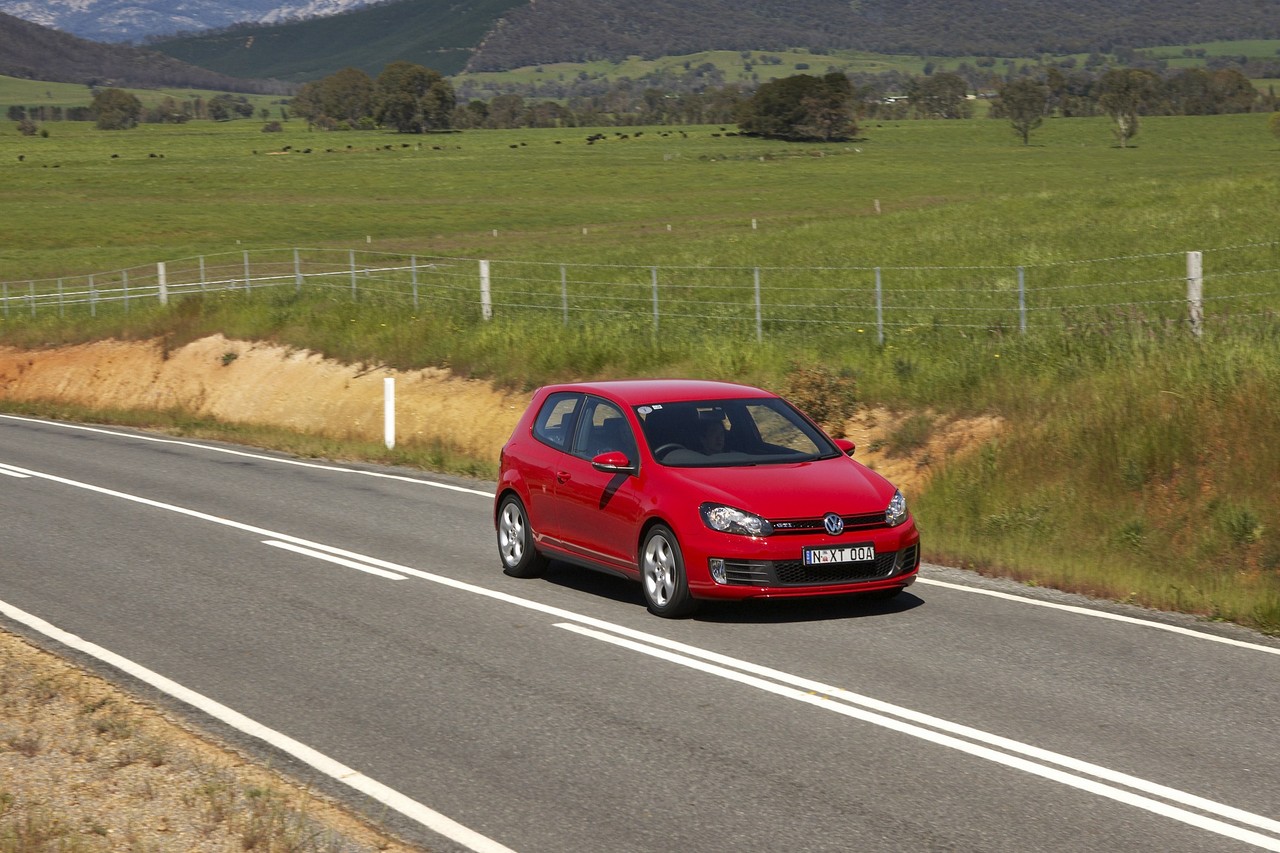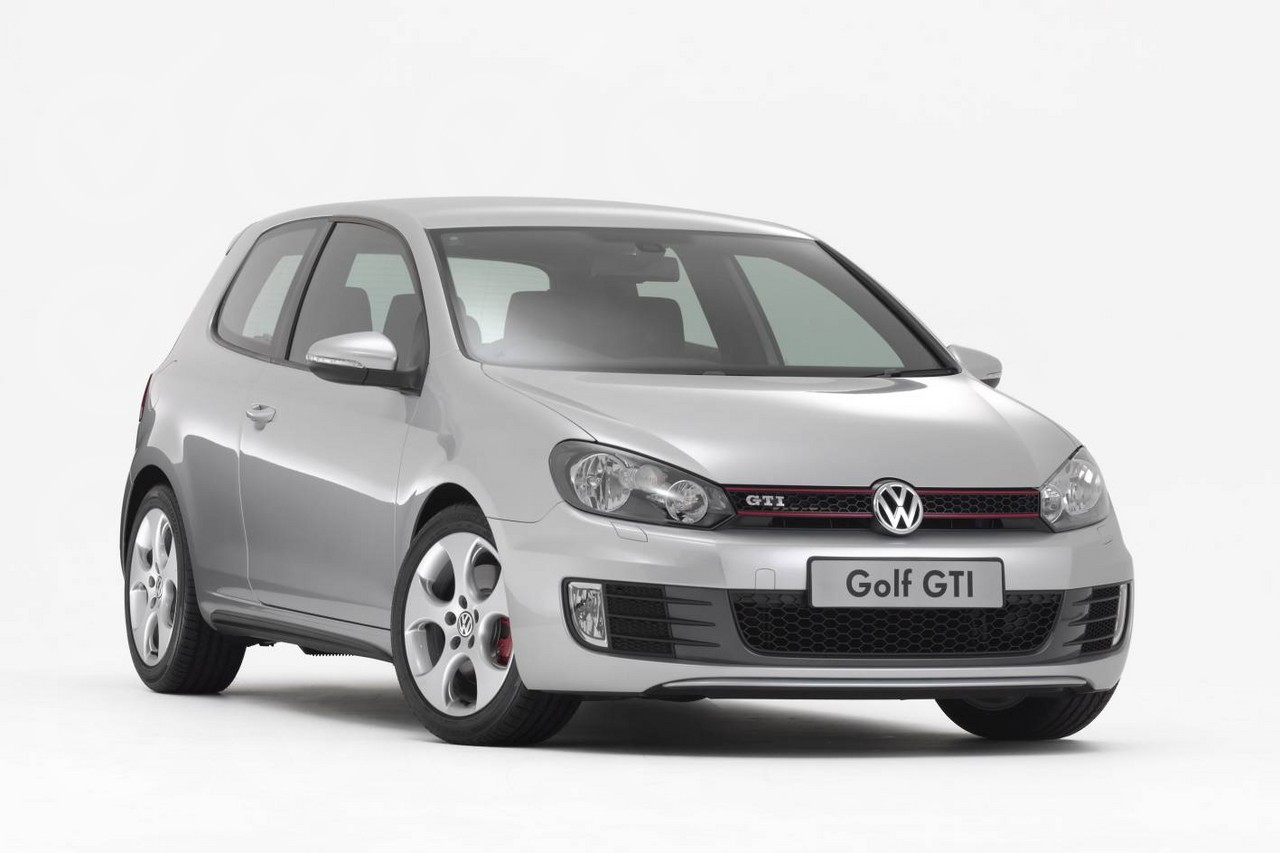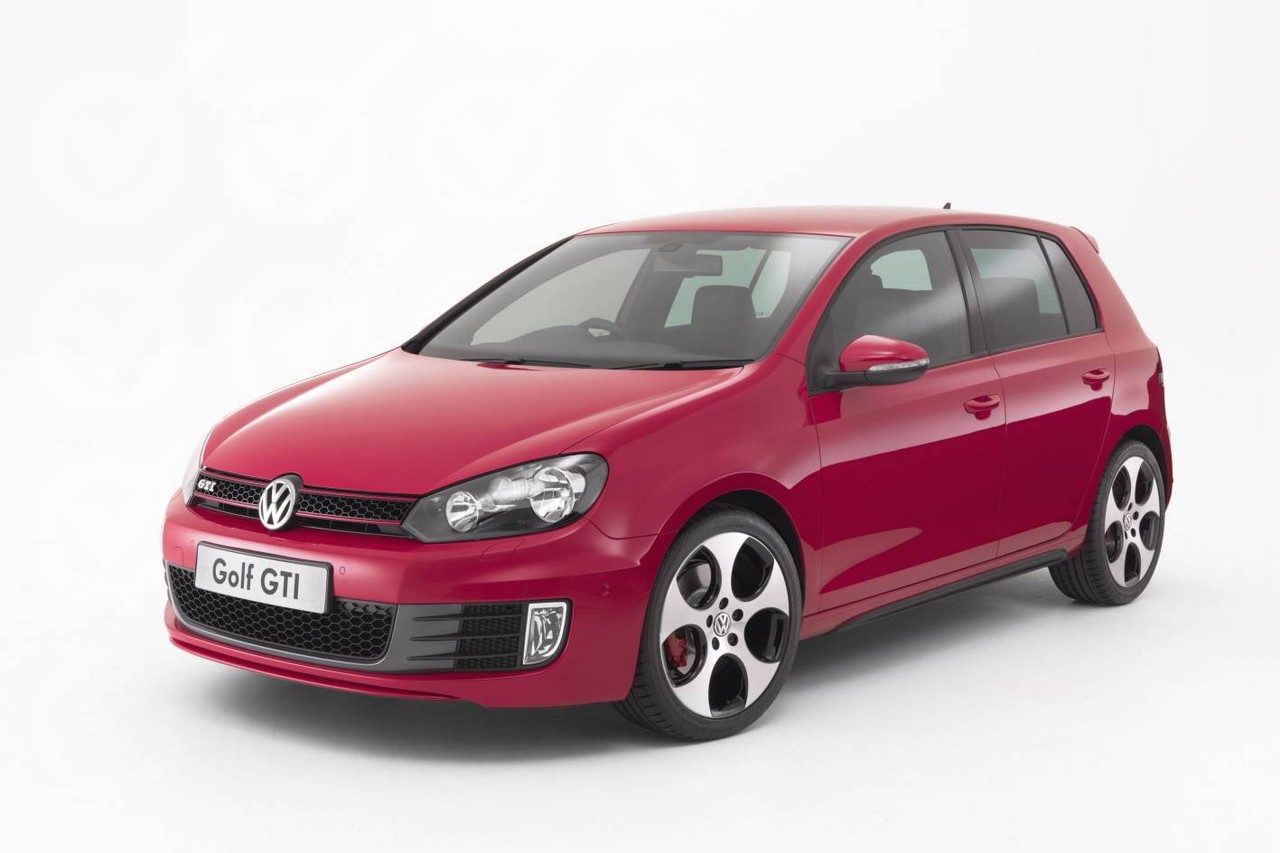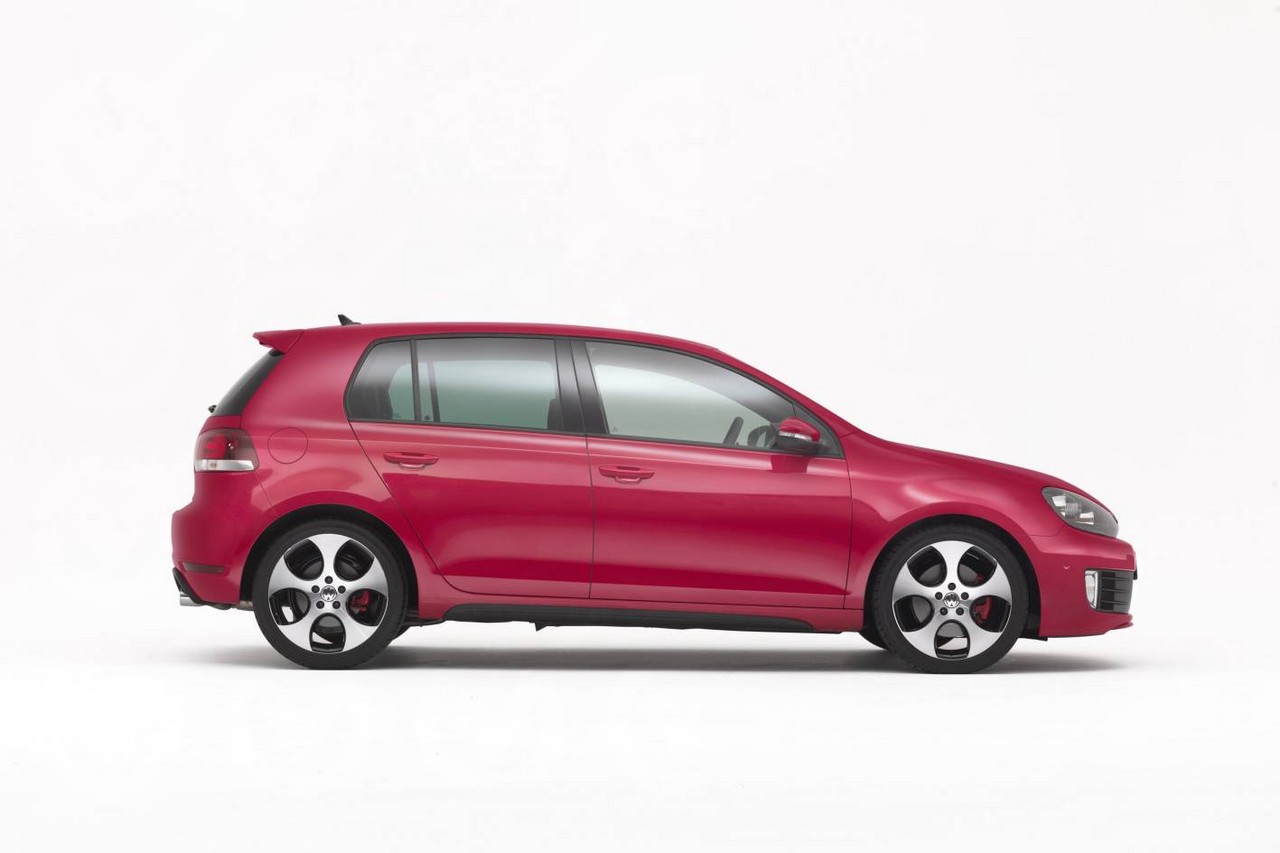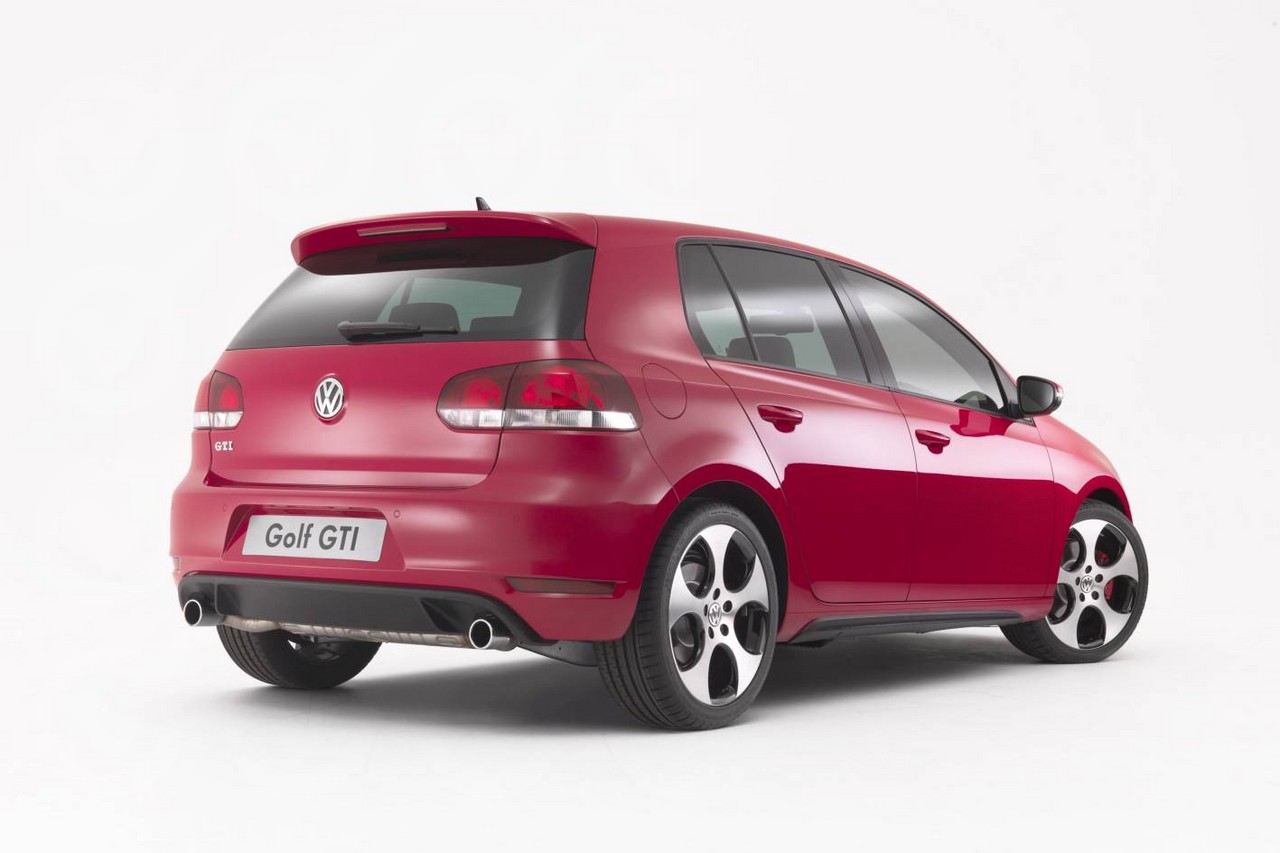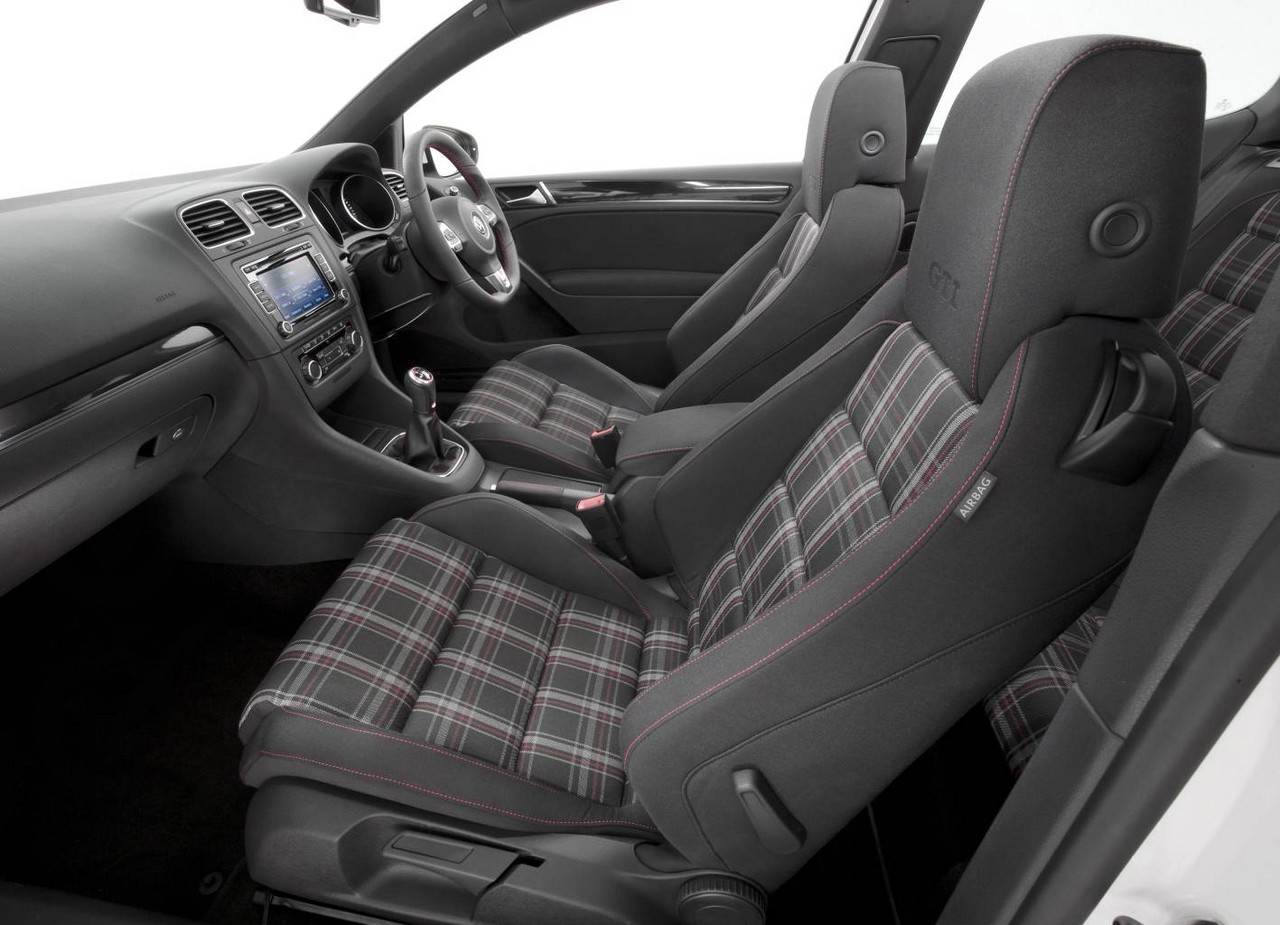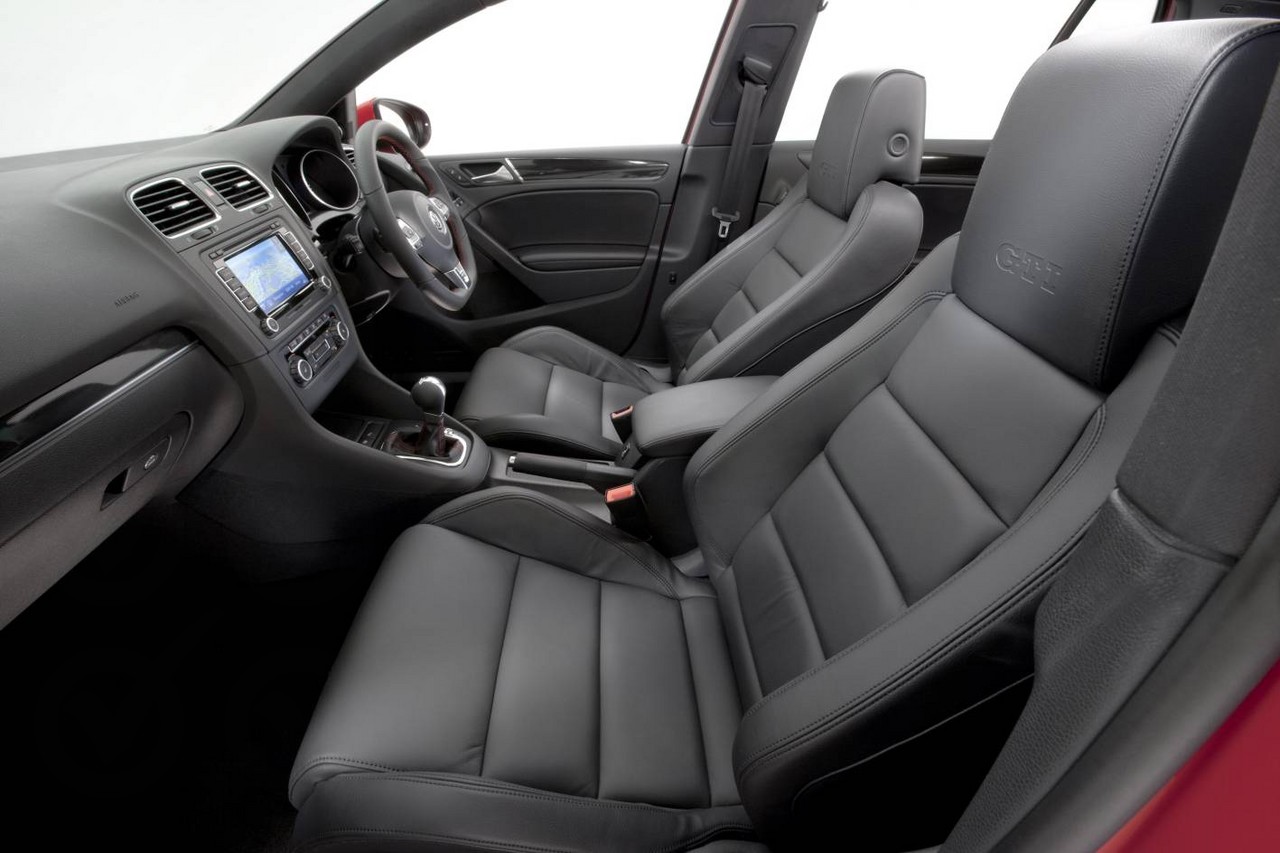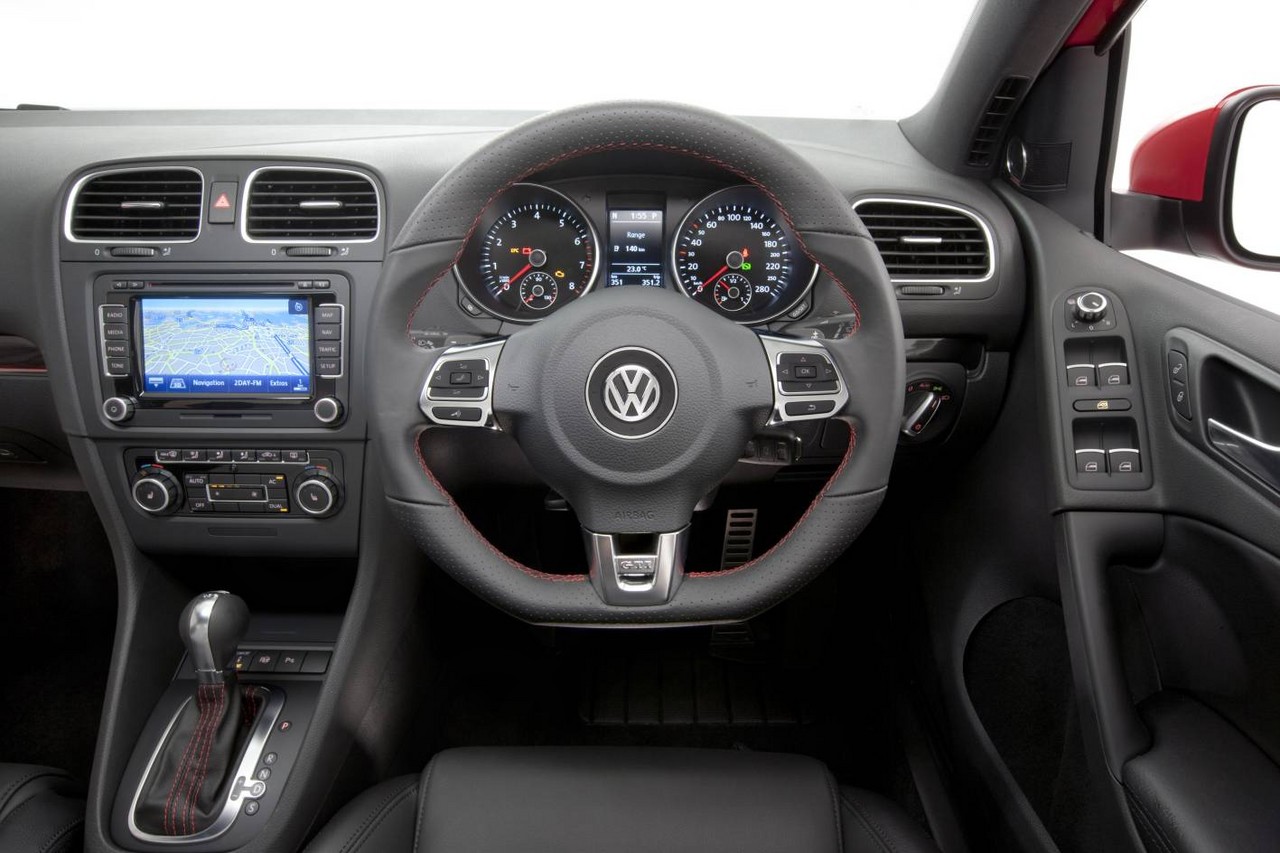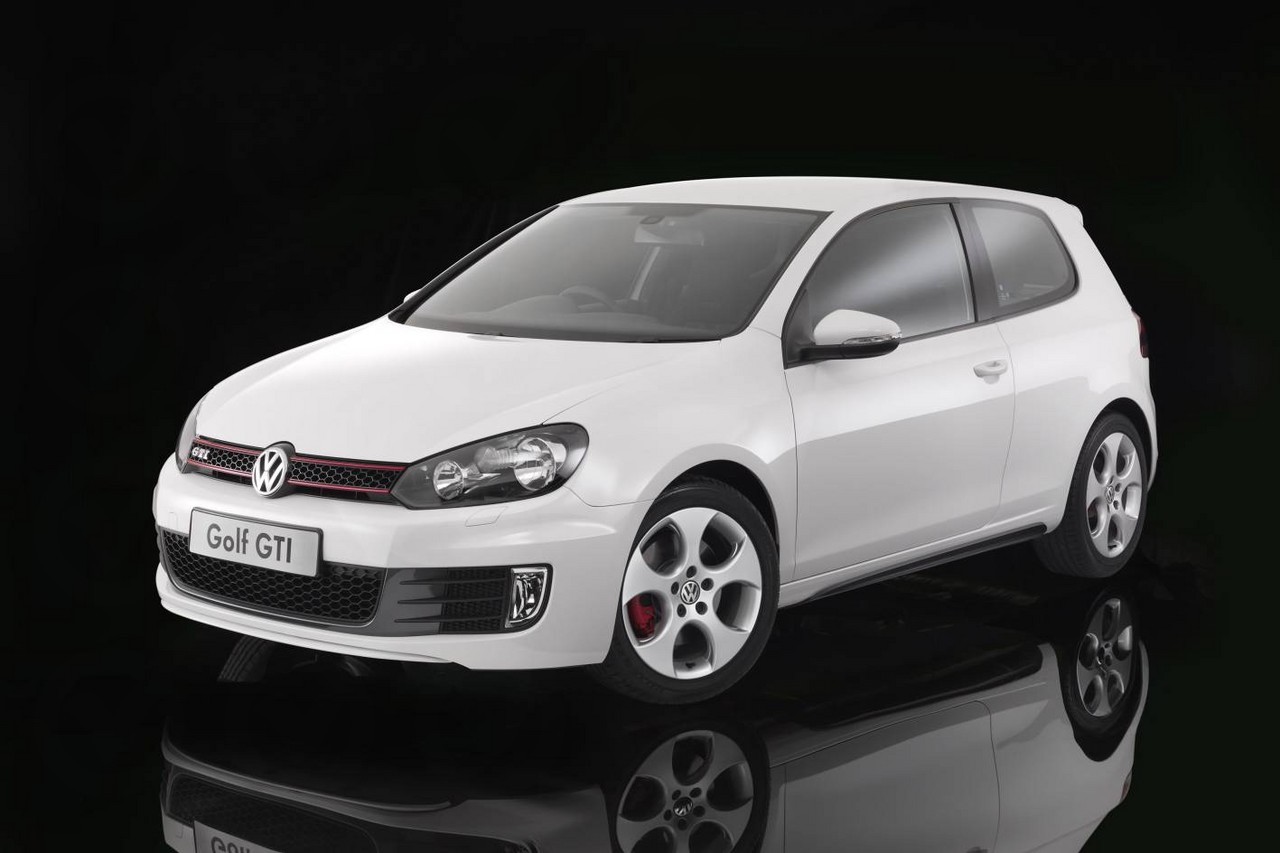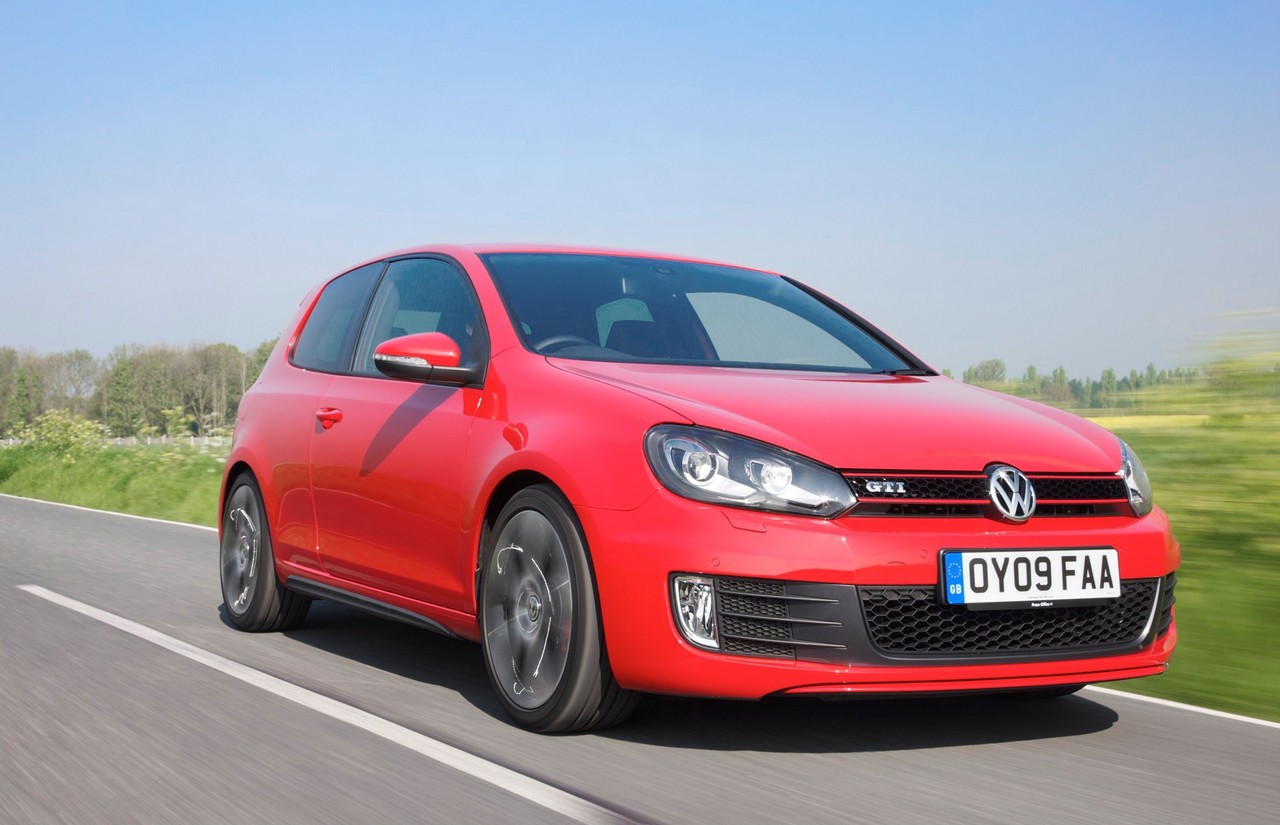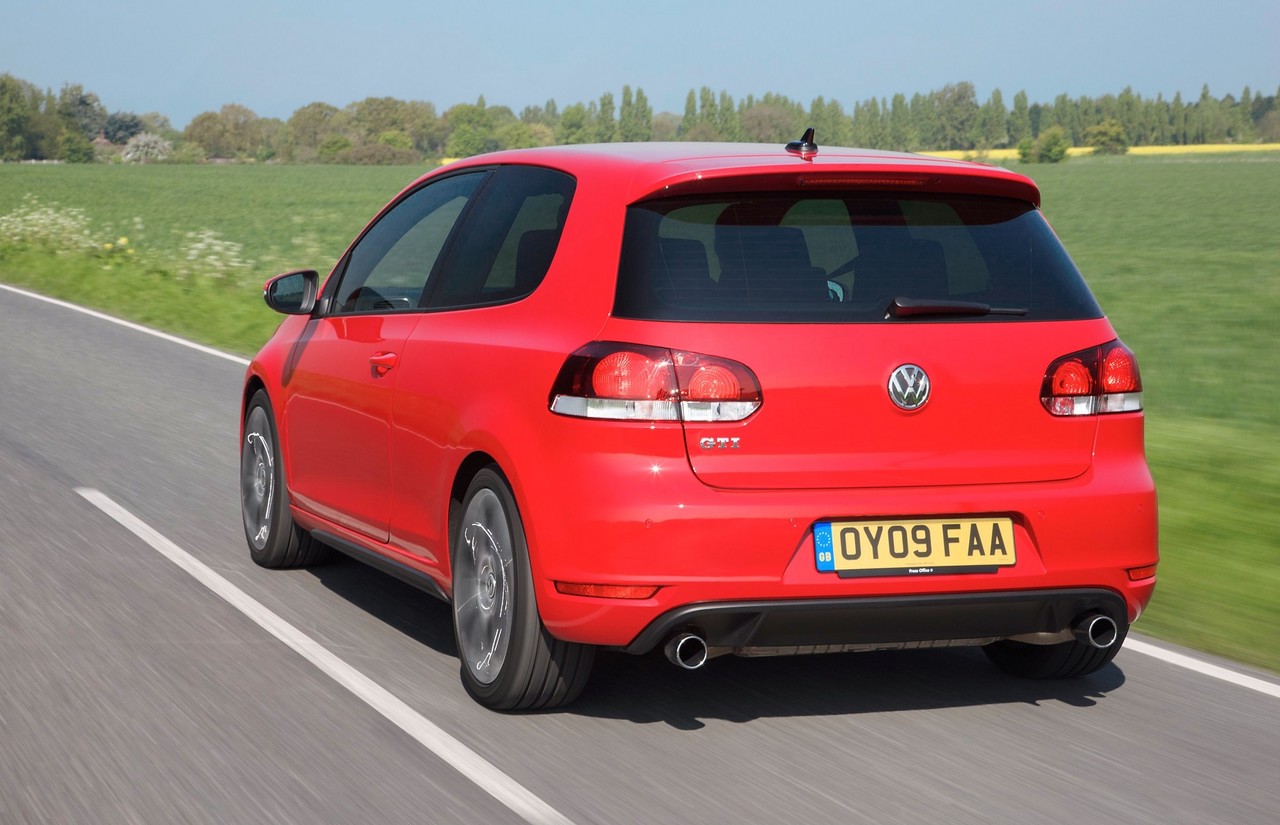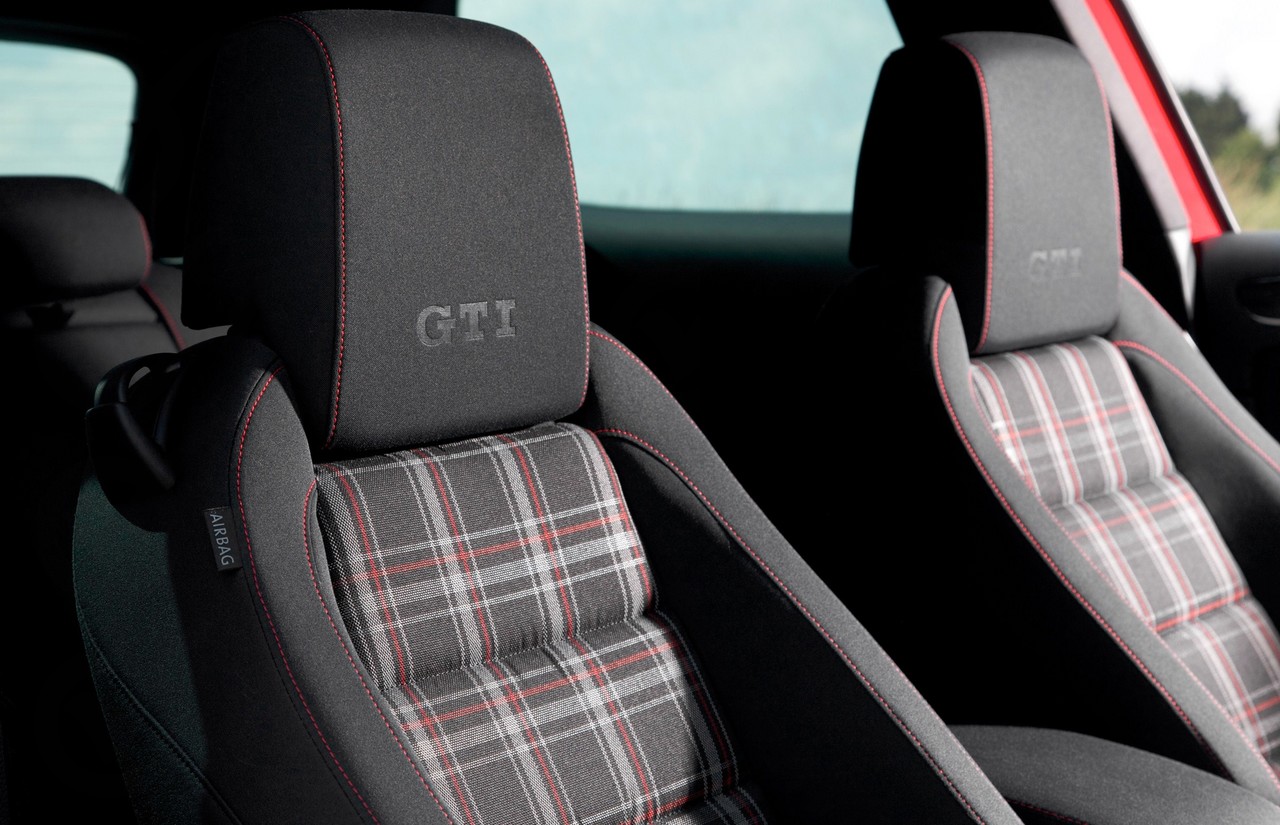
- Responsive 2.0-litre turbo petrol engine
- Refined, short-throw six-speed manual transmission
- DSG provides fast gearshifts
- Impressive dynamics
- Accurate steering
- Suspension lacks compliance
- DSG hesitant when accelerating from rest
- Sensitive brake pedal
- Exhaust drone when cruising
- Tyre noise
- For DSG, reports of harsh or jerky gearshifts due to excessive wear in the bushings of solenoid valves in the Mechatronic unit
Overview
Released in Australia in October 2009, the Volkswagen Mk.6 Golf GTi was available as a three- or five-door hatchback. Manufactured in Wolfsburg, Germany, the front-wheel drive VW Mk.6 Golf GTi was powered by a 2.0-litre turbocharged petrol engine that was mated to either a six-speed manual or double clutch transmission (DCT or Volkswagen’s DSG).
Golf GTi: CCZB EA888 engine
The Golf Mk.6 GTi’s 1984 cc CCZB EA888 engine had a grey cast iron block with an 82.5 mm bore and a 92.8 mm stroke, a die-forged steel crankshaft with five main bearings, a cast aluminium alloy cylinder head, direct injection (Volkswagen’s ‘Fuel Stratified Injection’ or FSI), a BorgWarner K03 turbocharger which provided peak boost pressure of 1.0 bar (14.4 psi), an intercooler, double overhead camshafts (toothed chain-driven), a continuously adjustable intake camshaft, roller finger cam followers with hydraulic valve clearance compensation, four valves per cylinder, a variable intake manifold, Bosch Motronic MED 17.5.5 engine management and a compression ratio of 9.6:1.
Although sharing the displacement of its EA113 predecessor, changes for the Mk.6 Golf GTi’s CCZB EA88 engine included:
- Modified pistons and piston rings;
- An uprated oil pump;
- A new induction system; and,
- A high-pressure fuel pump.
With both the six-speed manual and DSG transmissions, the Mk.6 Golf GTi could accelerate from rest to 100 km/h in 6.9 seconds.
Golf GTi Edition 35: CDLG EA113 engine
While the standard Mk.6 Golf GTi was powered by the CCZB EA888 engine, the Golf GTi Edition 35 was powered by the CDLG EA113 engine , a detuned version of the engine which was used in the Mk.6 Golf R . This engine differed from the EA888 engine in that it had a BorgWarner K04 turbocharger and a compression ratio of 9.8:1.
Fuel consumption
Over the combined ADR 81/02 test cycle, fuel consumption for the Mk.6 Golf GTi was 7.7 and 7.6 litres per 100 km for the manual and DSG models, respectively. Furthermore, the Golf GTi required 95 RON (minimum) premium unleaded petrol (PULP) and was compliant with Euro V emissions standards.
| Years | Engine | Trans. | Peak power | Peak torque | |
|---|---|---|---|---|---|
| Golf GTi | 2009-12 | 2.0-litre CCZB turbo petrol I4 | 6sp man., 6sp DSG |
155 kW at 5300-6200 rpm | 280 Nm at 1700-5200 rpm |
| Golf GTi Edition 35 | 2011 | 2.0-litre CDLG turbo petrol I4 | 6sp man., 6sp DSG |
173 kW at 5500-6300 rpm | 300 Nm at 2400-5200 rpm |
DSG transmission
The transversely mounted DSG unit had two wet clutches, two input shafts and two outputs shafts. In this arrangement, Clutch 1 (C1) operated the odd gears (plus reverse), while Clutch 2 (C2) operated the even gears. When driving, the next-higher gear ratio could be engaged without actually being activated. To change gears, the clutch for the current gear would open and the other clutch (for the higher gear) would engage under electrohydraulic control. Since the opening and closing actions of the two clutches overlapped, Volkswagen claimed that the system provided smooth gearshifts in less than four-hundredths of a second.
In addition to its fully automatic shift mode, the DSG had a Tiptronic function to permit manual gear selection – this could be performed via the steering wheel gearshift paddles.
Dimensions
Compared to the VW Mk.5 Golf GTi , the Mk.6 Golf GTi was 17 mm shorter (at 4199 mm), 26 mm wider (1785 mm), 2 mm lower (1464 mm) and had a 4 mm shorter wheelbase (2574 mm). Furthermore, the Golf GTi had a drag coefficient of 0.32 Cd.
Inside, the Golf GTi had cargo space of 350 litres with the rear seats in position, though this increased to 1305 litres when they were folded flat.
Steering and suspension
The Volkswagen Mk.6 Golf GTi had MacPherson strut front suspension (with lower A-arms and an anti-roll bar) and independent, four-link rear suspension which had three lateral control arms (the spring mounting, track rod and upper control arm), a trailing link at each wheel, coil springs and an anti-roll bar.
Compared to the standard Mk.6 Golf the front and rear suspension for the Golf GTi was lowered by 22 mm and 15 mm, respectively. As an extra-cost option, the Golf GTi was available with electronically-controlled dampers (Volkswagen’s ‘Adaptive Chassis Control’) which enabled the driver to select from normal, comfort or sport modes – these modes also altered throttle response and steering settings.
The Mk.6 Golf GTi had speed-sensitive electric, power-assisted steering.
Safety equipment
Standard safety equipment for the Volkswagen Mk.6 Golf GTi included dual front airbags, front side airbags, full-length curtain airbags (i.e. for front and rear occupants), a driver’s knee airbag, ABS, brake assist, electronic brake force distribution, traction control, electronic stability control (EPS), front seatbelts with pretensioners and load limiters.
Brakes
The VW Mk.6 Golf GTi had 312 mm by 25 mm ventilated front brake discs and 282 mm by 12 mm solid rear discs.
Euro NCAP crash testing
In Euro NCAP crash testing , a five-door Golf hatchback achieved a five star adult occupant protection rating with a score of 35.72 out of 37. In the frontal offset impact test, there was a slight risk of serious leg injury for the driver. In the side impact test, a fraction of a point was lost due to a very slight risk of serious chest injury for the driver – Volkswagen advises that a clip securing the side airbag has since been upgraded.
The Golf was subsequently reassessed under Euro NCAP’s updated testing methodology and received a five star safety rating which included a 97 per cent adult occupant protection rating and an 84 per cent child occupant protection rating.
Features: Golf GTi
Standard features for the VW Mk.6 Golf GTi included 17 x 7.5J ‘Denver’ alloy wheels with 225/45 R17 tyres, an eight-speaker sound system (Volkswagen’s RCD510) with a 6.5-inch touch screen, a six-disc in-dash CD player, MP3/WMA compatibility and auxiliary inputs (3.5 mm/SD card), dual-zone climate control air conditioning, front ‘Top’ sports seats, ‘Jacky’ tartan cloth seat tirm, cruise control, daytime running lights, a rear fog lamp, automatic headlights, rain-sensing wipers, a three-spoke flat-bottomed steering wheel wrapped in leather, 60/40 split and folding rear seats, remote central locking, power windows and heated mirrors, tilt and telescopic steering wheel adjustment, height adjustable front seats, an auto-dimming rear view mirror, 12 volt power sockets (centre console and cargo area), front and rear floor mats, a cargo net, tinted windows, illuminated footwells, front reading lights, illuminated vanity mirrors, black headlining, tyre pressure monitoring, a trip computer and an immobiliser.
Beyond this,
- Three-door Golf GTi models had an ‘easy entry’ front seat backrest release; and,
- All Mk.6 Golf GTi models were fitted with a space-saving spare wheel.
Extended Electronic Differential Lock (XDL)
The Mk.6 Golf GTi was fitted with an ‘Extended Electronic Differential Lock’ (Volkswagen’s ‘XDL’). When cornering, the XDL responded to the unloading of the front inside wheel by applying the brakes to that wheel to prevent wheelspin and minimise understeer.
Options: Golf GTi
Extra-cost options for the Golf GTi included:
- A 300 watt, eight-channel Dynaudio sound system;
- DVD-based satellite navigation with a 30 GB hard-drive and SD card slot;
- Rear parking sensors;
- A rear-view camera;
- Park assist (automated steering during reverse parallel parking manoeuvres);
- Bi-xenon headlights; and,
- 18-inch alloy wheels.
2010 Golf GTi Adidas edition
In October 2010, the five-door Golf GTi Adidas edition was released. Compared to the regular Golf GTi, the Adidas edition was distinguished by its 18-inch machine-polished ‘Serron’ alloy wheels, bi-xenon headlights, smoked LED tail lights, contoured front seats with Vienna leather bolsters, Adidas-designed interior seat trim, aluminium interior highlights and exterior Adidas badges.
2011 Golf GTi Edition 35
To celebrate 35 years of Golf GTi production, the limited-run five-door Golf GTi Edition 35 was released in July 2011. With its more powerful engine, the Golf GTi Edition 35 could accelerate from rest to 100 km/h in 6.6 seconds. Inside, the Golf GTi Edition 35 featured directional bi-xenon headlights, LED daytime running lights, ’35’ logos for the front seat head restraints, special door sill plates with ’35’ logos and a ball-style gearshift.
Visually, the Golf GTi Edition 35 could be identified by its 18-inch ‘Watkins Glen’ five-spoke alloy wheels with 225/40 R18 tyres, front bumper with aerodynamic winglets in the lower outboard areas, black front spoiler mid-section, gloss black mirror housings, body-coloured side sill extensions, smoked LED tail-lights, LED-illuminated rear licence plate, ‘smoked’ rear windows and ’35’ edition badges on the front wings. Furthermore, the Golf GTi Edition 35 was available in Candy White, Tornado Red, Carbon Steel Grey metallic and Deep Black pearl effect paint finishes.
August 2011 update
In August 2011, standard features were extended to include Bluetooth mobile phone connectivity and audio streaming, and Volkswagen’s ‘Media Device Interface’ (MDI) with USB connection cable.
Brochure
Related links
- Specifications: Volkswagen Mk.6 Golf GTi (October 2009)
- Press Kit: Volkswagen Mk.6 Golf GTI (October 2009)
- Wikipedia.org: Volkswagen Mk.6 Golf
